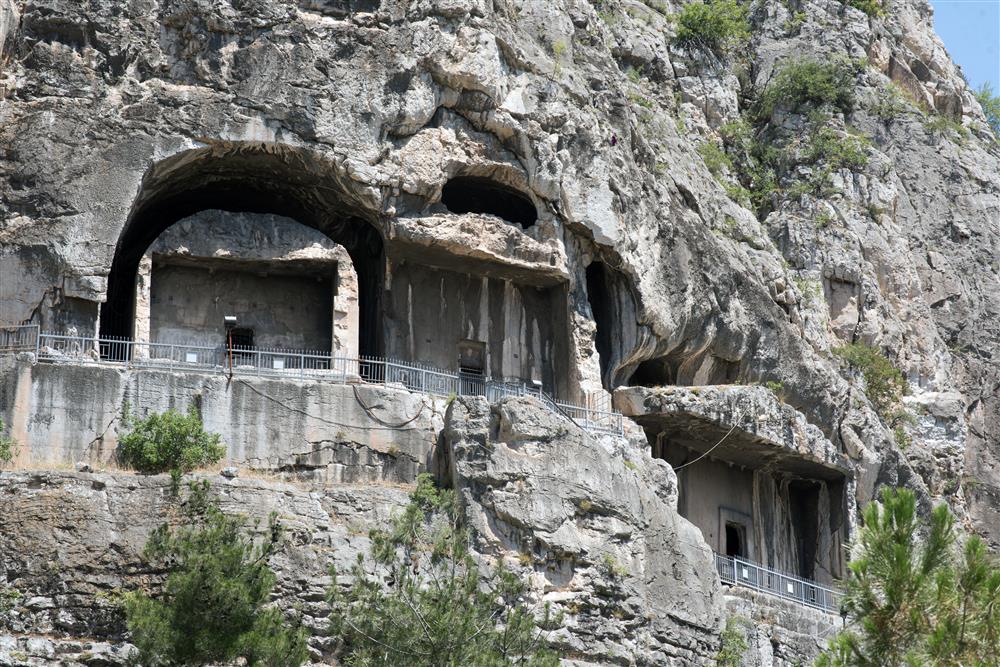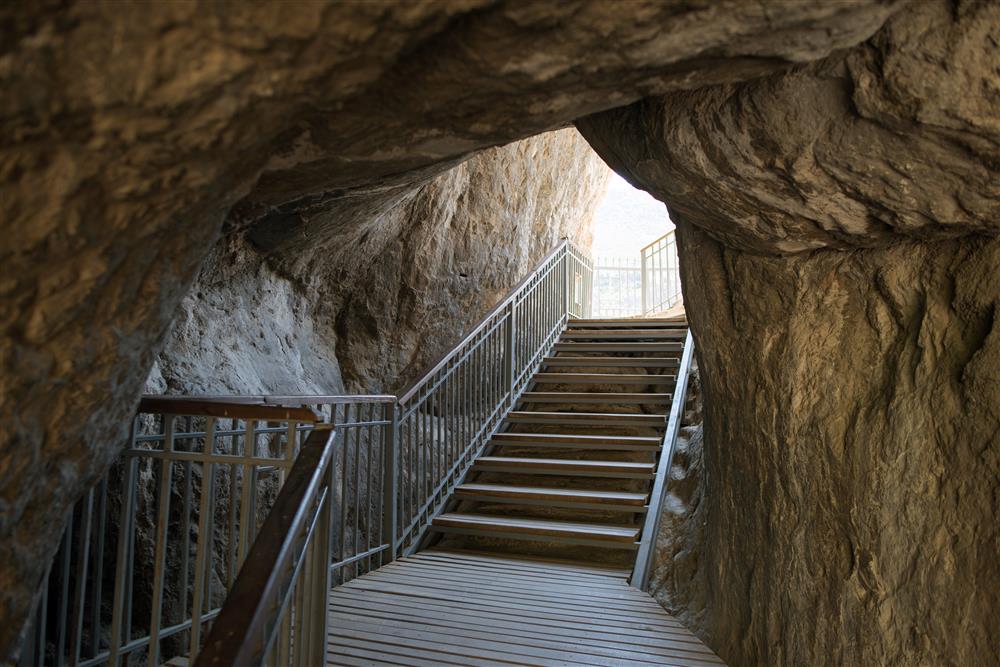The Rock Tombs Of The Kings Of Pontic
The rock tombs of the Pontic kings who ruled Amasya in the Hellenistic period from 333 BC to 26 AD were carved into the steep limestone slopes on the outskirts of the Castle. Between the tombs, reached after a short journey along the narrow streets of Hatuniye District and across the railroad, there are narrow paths and stairs carved into the rocks. There are supposed to be 21 rock tombs of various sizes along Yeşilırmak valley; however only a couple of them has survived to this day. The gateways carved deep into the rocks are an interesting feature of these rock tombs. Nearby one of the biggest tombs in the area, there is an entrance which is believed to be the beginning of a tunnel that ends up at the riverbank.
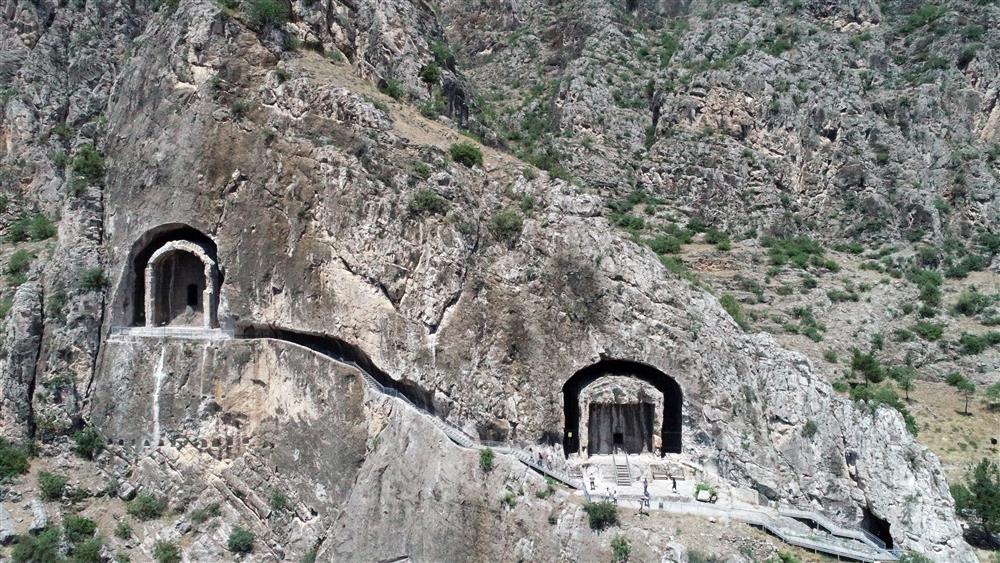
The biggest one of the rock tombs of Kings is the last tomb to the west accessed by galleries and stairs. This particular cave is 15 meters high, 8 meters wide and 6 meters deep. The entrance to the sepulcher is higher than those of other tombs. The façade of this tomb, also known as “The Great King’s Tomb”, is heavily ruined.
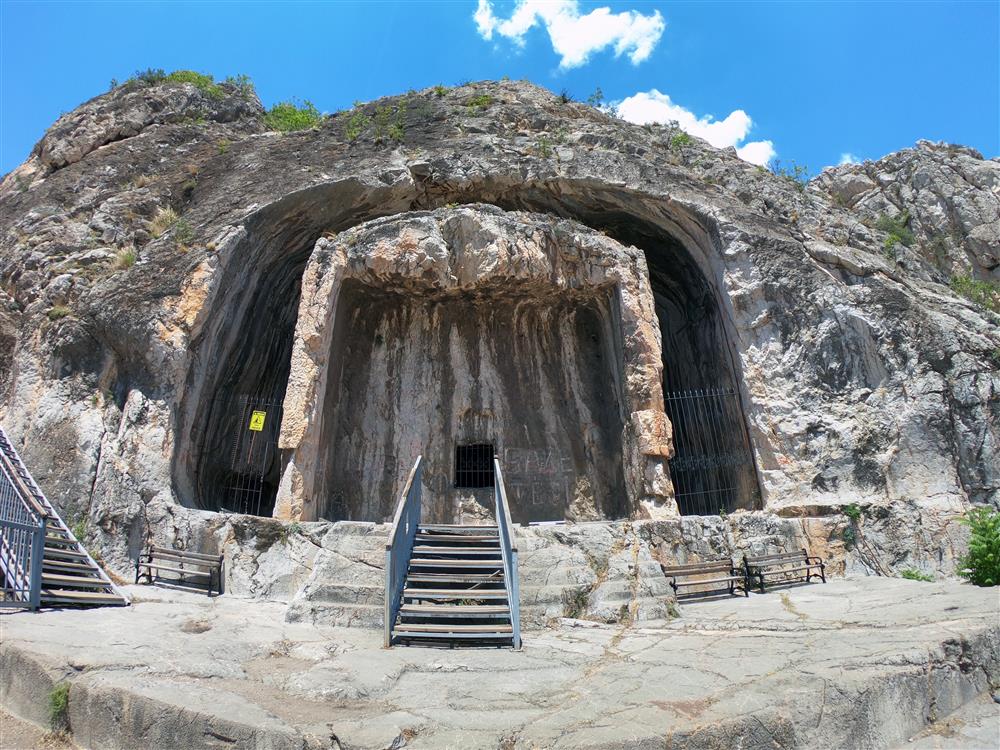
The tombs above Kızlar Sarayı are carved rather close to each other. The one on the left is built in a fashion so as to overshadow the one in the middle. The tomb, below Kızlar Sarayı and just above the railroad, is carved into a massive block of rock as is usual. Unlike the others, though, it is not fringed and there are no pathways or stairs to enable access to the tomb. The pillars on both sides of the cave have been broken.
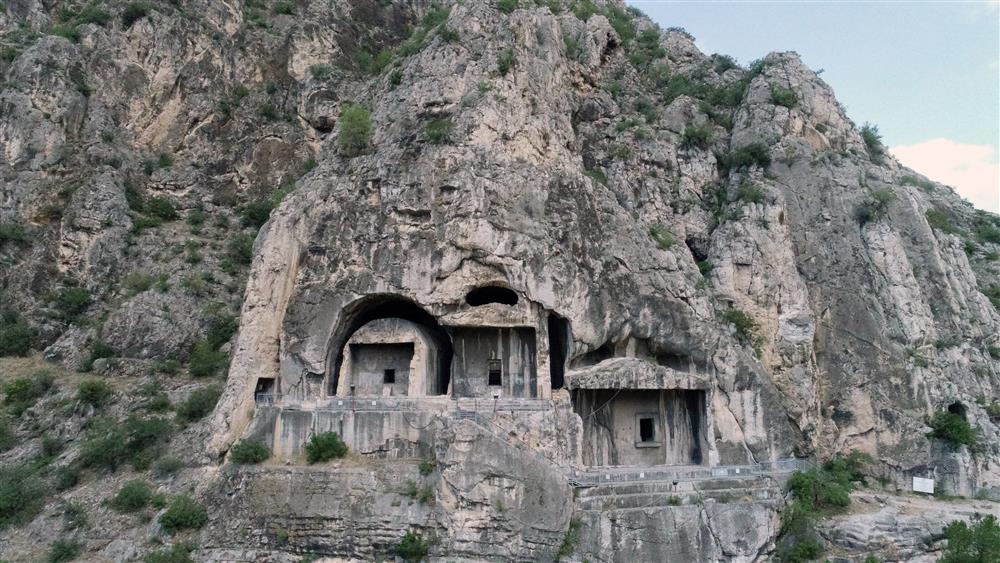
The common feature of these rock tombs is that they all have entrances likened to doors as high as 2 or 3 meters. These tombs have been used as prisons and punishment cells throughout history. The mortal remains in the tombs were carried away in complaisance with the directives of Melik Ahmet Danişmend Gazi who conquered Amasya in 1075.
